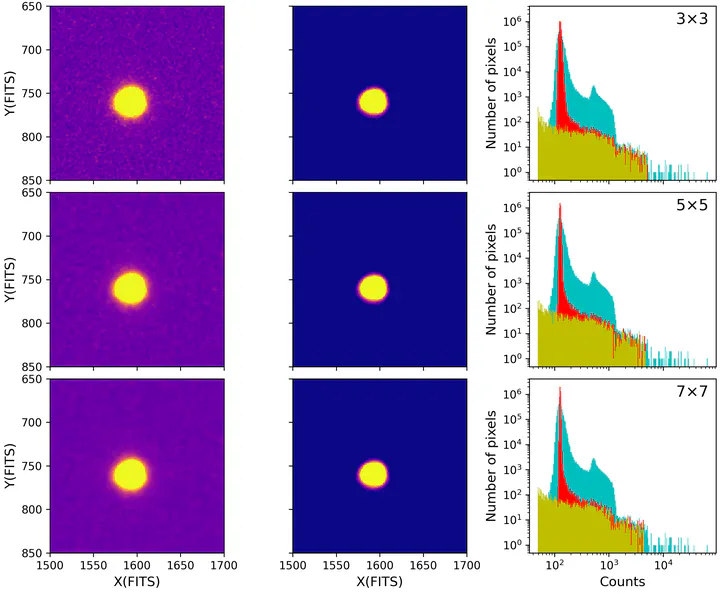Data reduction method for OPTICAM multiband time series of transiting exoplanets
Sep 10, 2025· ,,·
0 min read
,,·
0 min read
S. Paez
Y. Gómez Maqueo Chew
L. H. Hebb
 Image subframes and distributions of counts for different median filters preprocessing including 3x3-pixel window.
Image subframes and distributions of counts for different median filters preprocessing including 3x3-pixel window.Abstract
We present a methodology for acquiring and reducing transiting exoplanet light curves obtained with San Pedro Mártir (SPM) 2.1m+OPTICAM, based on ~180h of observations acquired between 2023 and 2025. The OPTICAM sCMOS detectors generate significant hot pixels at exposures ≥ 10s, affecting both science and calibration frames. These hot pixels are not removed by standard dark subtraction because they vary unpredictably from frame to frame. We evaluate six preprocessing methods applied to science and calibration images using the transit of a TESS planet candidate observed in the g’r’i’ filters. A median filter with a 3x3-pixel window minimizes the effect of hot pixels without affecting stellar signals. This proposed method best reduces dispersion and red noise in the light curves when stellar peak counts are close to the dark current level. The improvement is less significant when the stellar peak is several thousand counts above the dark current level. We fit a multiband transit model to the light curves, measuring photometric precision, correlated noise, and retrieved planetary parameters. Although we analyze the same dataset, we find that fitted parameters depend on the preprocessing method used. Posterior comparisons show that the median filter preprocessing best describes the data. We caution against combining light curves from different reductions, as it could introduce unquantifiable systematic errors; for example, the derived impact parameter varies by up to ~5.6σ. Finally, we introduce PROFE, a reduction pipeline that implements our proposed method, which incorporates AstroImageJ and Python scripts.
Type
Publication
Submitted to RAS Techniques and Instruments on Sep. 2025